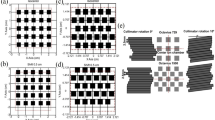Abstract
The purpose of this study is to define departmental action limits for energy percentage variation measured by means of step-wedge helical Tomotherapy quality assurance module. Individual charts using the Statistical Process Control techniques have been used to identify retrospectively out-of-control situations ascribable to documented actions performed on the Tomotherapy system. Using the in-control data of our analysis process capability indices (cp, cpk, cpm and cpmk) are calculated in order to document the real working condition of the Tomotherapy system. Our findings indicate use of an action limit of 1.0% for energy percentage variation difference between the measured and reference output is a good working condition of a Tomotherapy system. cp and cpk indices are suggested as good indices that correctly report the system capability. A method for calculating and reporting Tomotherapy action limits for the integrated self-checking TQA energy check was shown in this study. SPC technique has proven to be efficient in defining departmental action limits from retrospective data for TQA energy measurements, hence optimally enabling corrective improvements in the process of quality assurance.


Similar content being viewed by others
References
Gérard K, Grandhaye JP, Marchesi V, Kafrouni H, Husson F, Aletti P (2009) A comprehensive analysis of the IMRT dose delivery process using statistical process control (SPC). Med Phys 36(4):1275–1285
Webb S (1998) Intensity-modulated radiation therapy: dynamic MLC (DMLC) therapy, multisegment therapy and tomotherapy. An example of QA in DMLC therapy. Strahlentherapie und Onkologie: Organ der Deutschen Rontgengesellschaft [et al]. 174:8–12
Balog J, Olivera G, Kapatoes J (2003) Clinical helical tomotherapy commissioning dosimetry. Med Phys 30(12):3097–3106
Binny D, Lancaster CM, Trapp JV, Crowe SB (2017) Statistical process control and verifying positional accuracy of a cobra motion couch using step-wedge quality assurance tool. J Appl Clin Med Phys 18(5):70–79
Binny D, Mezzenga E, Lancaster CM, Trapp JV, Kairn T, Crowe SB (2017) Investigating output and energy variations and their relationship to delivery QA results using Statistical Process Control for helical tomotherapy. Phys Medica 38:105–110
Langen KM, Papanikolaou N, Balog J et al (2010) QA for helical tomotherapy: report of the AAPM Task Group 148a. Med Phys 37(9):4817–4853
Mezzenga E, D’Errico V, Sarnelli A et al (2016) Preliminary retrospective analysis of daily Tomotherapy output constancy checks using Statistical process control. PLoS ONE 11(2):e0147936
Miften M, Olch A, Mihailidis D et al (2018) Tolerance limits and methodologies for IMRT measurement-based verification QA: recommendations of AAPM Task Group No. 218. Med Phys 45(4):e53–e83
Sanghangthum T, Suriyapee S, Srisatit S, Pawlicki T (2013) Retrospective analysis of linear accelerator output constancy checks using process control techniques. J Appl Clin Med Phys 14(1):147–160
Choi HH, Ho JP, Yang B, Cheung KY, Yu SK (2014) Correlation between TQA data trends and TomoHD functional status. J Appl Clin Med Phys 15(2):345–349
Binny D, Lancaster CM, Harris S, Sylvander SR (2015) Effects of changing modulation and pitch parameters on tomotherapy delivery quality assurance plans. J Appl Clin Med Phys 16(5):85–105
Shimizu H, Sasaki K, Iwata M et al (2016) Rotational output and beam quality evaluations for helical tomotherapy with use of a third-party quality assurance tool. Radiol Phys Technol 9(1):53–59
Buttrey SE (2009) An excel add-in for statistical process control charts. J Stat Softw 30(13):1–12
Montgomery DC (2009) Statistical quality control, vol 7. Wiley, New York
Noyez L (2009) Control charts, Cusum techniques and funnel plots. A review of methods for monitoring performance in healthcare. Interact Cardiovasc Thorac Surg 9(3):494–499
Pawlicki T, Whitaker M, Boyer AL (2005) Statistical process control for radiotherapy quality assurance. Med Phys 32(9):2777–2786
Boggs PB, Wheeler D, Washburne WF, Hayati F (1998) Peak expiratory flow rate control chart in asthma care: chart construction and use in asthma care. Ann Allergy Asthma Immunol 81(6):552–562
Fasting S, Gisvold SE (2003) Statistical process control methods allow the analysis and improvement of anesthesia care. Can J Anaesth 50(8):767–774
Pitkänen MA, Holli KA, Ojala AT, Laippala P (2001) Quality assurance in radiotherapy of breast cancer variability in planning target volume delineation. Acta Oncol 40(1):50–55
Zhang Z, Low Y, Fang X (1998) PCI-based tolerance as an interface between design specifications and statistical quality control. Comput Ind Eng 35(1–2):201–204
Zhang Y, Yang M, Zhang Y (2006) Concurrent design for process quality, statistical tolerance, and SPC. Commun Stat Theory Methods 35(10):1869–1882
Tang LC, Than SE (1999) Computing process capability indices for non-normal data: a review and comparative study. Qual Reliab Eng Int 15(5):339–353
Anderson TW, Darling DA (1954) A test of goodness of fit. J Am Stat Assoc 49(268):765–769
Acknowledgements
The authors thank all medical physics teams from Royal Brisbane and Women’s Hospital, IRST, Meldola and ICON Cancer Centres for their valuable input and contribution to this study.
Author information
Authors and Affiliations
Corresponding author
Ethics declarations
Conflict of interest
No grants were used in this study and there are no conflicts of interest to declare.
Ethical approval
This article does not contain any studies with human participants or animals performed by any of the authors.
Additional information
Publisher's Note
Springer Nature remains neutral with regard to jurisdictional claims in published maps and institutional affiliations.
Electronic supplementary material
Below is the link to the electronic supplementary material.
Rights and permissions
About this article
Cite this article
Binny, D., Mezzenga, E., Sarnelli, A. et al. Departmental action limits for TQA energy variations defined by means of statistical process control methods. Phys Eng Sci Med 43, 29–34 (2020). https://doi.org/10.1007/s13246-019-00791-0
Received:
Accepted:
Published:
Issue Date:
DOI: https://doi.org/10.1007/s13246-019-00791-0




